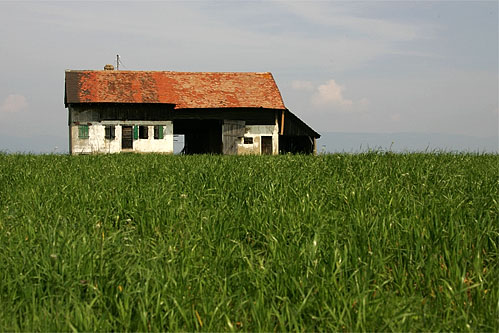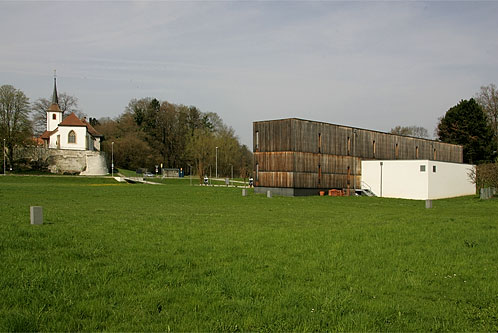|
Gletterens
Gletterens () is a municipality in the district of Broye, in the canton of Fribourg, Switzerland. It is home to the Les Grèves prehistoric pile-dwelling (or stilt house) settlements that are part of the Prehistoric Pile dwellings around the Alps UNESCO World Heritage Site. History Gletterens is first mentioned in 1239 as ''Lieterins''. Geography Gletterens has an area, , of . Of this area, or 51.7% is used for agricultural purposes, while or 16.1% is forested. Of the rest of the land, or 20.2% is settled (buildings or roads) and or 12.3% is unproductive land. 2009 data . Retrieved 25 March 2010 Of the built up area, housing and buildings made up 12.0% and transportation infrastructure made up 2.7%. while parks, green belts and sports fields made up 5.1%. Out of the forested land, all of the forested ... [...More Info...] [...Related Items...] OR: [Wikipedia] [Google] [Baidu] |
Broye (district)
Broye District (; frp, District de la Brouye ; german: Broyebezirk) is one of the seven districts of the Canton of Fribourg, Switzerland, lying in the vicinity of Lake Neuchâtel. Its territory is non-contiguous and Broye is fragmented into four parts, three of which exist as exclaves from the canton of Fribourg. It has a population of (as of ). Municipalities Broye consists of the following municipalities, of which Estavayer is the capital: Mergers and name changes *On 1 January 1981 the former municipalities of La Vounaise and Montborget merged into the municipality of Murist. *In 1991 the former municipality Les Friques merged into the municipality Saint-Aubin. *On 31 December 1991 the former municipality of Franex merged into the municipality Murist. *In 1994 the former municipality Chandon merged into the municipality Léchelles *On 1 January 2000 the former municipalities of Montagny-la-Ville and Montagny-les-Monts merged to form the new municipality of Montagny (FR). ... [...More Info...] [...Related Items...] OR: [Wikipedia] [Google] [Baidu] |
Prehistoric Pile Dwellings Around The Alps
Prehistoric pile dwellings around the Alps are a series of prehistoric pile dwelling (or stilt house) settlements in and around the Alps built from about 5000 to 500 BC on the edges of lakes, rivers or wetlands. In 2011, 111 sites located variously in Switzerland (56), Italy (19), Germany (18), France (11), Austria (5) and Slovenia (2) were added to the UNESCO World Heritage Site list. In Slovenia, these were the first World Heritage Sites to be listed for their cultural value. Excavations conducted at some of the sites have yielded evidence regarding prehistoric life and the way communities interacted with their environment during the Neolithic and Bronze Ages in Alpine Europe. These settlements are a unique group of exceptionally well-preserved and culturally rich archaeological sites, which constitute one of the most important sources for the study of early agrarian societies in the region. Contrary to popular belief, the dwellings were not erected over water, but on nearby ma ... [...More Info...] [...Related Items...] OR: [Wikipedia] [Google] [Baidu] |
Chevroux, Switzerland
Chevroux is a municipality in the district of Broye-Vully in the canton of Vaud in Switzerland. History Chevroux is first mentioned in 1286 as ''Chevroth''. Geography As of 2009, Chevroux has an area of . Of this area, or 47.6% is used for agricultural purposes, while or 19.0% is forested. Of the rest of the land, or 9.4% is settled (buildings or roads), or 0.5% is either rivers or lakes and or 23.1% is unproductive land.Swiss Federal Statistical Office-Land Use Statistics 2009 data accessed 25 March 2010 Of the built up area, industrial buildings made up 1.1% of the total area while housing and buildings made up 5.0% and transportation infrastructure made up 2.5%. Out of the forested land, all of the forested land area is covered with heavy fo ... [...More Info...] [...Related Items...] OR: [Wikipedia] [Google] [Baidu] |
Boudry
Boudry a municipality in the canton of Neuchâtel in Switzerland. History Boudry is first mentioned in 1278 as ''Baudri''. There are numerous prehistoric settlements around Boudry. These include the neolithic stilt houses on the banks of Lake Neuchâtel, the caves of Abri Baume du Four (occupied from the Neolithic to the La Tène period), tumuli of the Hallstatt period in the Vallon de Vers and two Celtic villages at Les Buchilles. There a number of Roman era artifacts and a Burgundian cemetery at Bel-Air by the Areuse river. During the Middle Ages it was the capital of the seigneurie of Boudry. Until the 14th Century, the hamlets of Pontareuse and Vermondins were part of the seigneurie. Pontareuse was near the bridge, with which the Roman road of Vy d'Etraz crossed the Areuse, while Vermondins was on a plateau near the modern city of Boudry. In 1282, Pierre de Vaumarcus sold the jurisdiction rights to Girard d'Estavayer. In 1313, his son Rollin sold these rights to ... [...More Info...] [...Related Items...] OR: [Wikipedia] [Google] [Baidu] |
Delley-Portalban
Delley-Portalban () is a municipality in the district of Broye, in the canton of Fribourg, Switzerland. The municipality was created on 1 January 2005 from the merger of Delley and PortalbanAmtliches Gemeindeverzeichnis der Schweiz published by the Swiss Federal Statistical Office . Retrieved 19 July 2011 ( frp, Pôrt-Alban, locally ). History Delley is first mentioned in 1342 as ''Deler''. Portalban is first mentioned in 1166 as ''Portubanni''.Geography Delley-Portalban has an area, , of . Of this area, or 64.0% is used for agricultural purposes, while or 13.5% is forested. Of the rest of the land, or 12.0% is settled (buildings or roads), or 0.6% is ...[...More Info...] [...Related Items...] OR: [Wikipedia] [Google] [Baidu] |
Grandcour
Grandcour is a municipality in the district of Broye-Vully in the canton of Vaud in Switzerland. History Grandcour is first mentioned in 1212 as ''apud grancort''. Geography Grandcour has an area, , of . Of this area, or 78.9% is used for agricultural purposes, while or 14.4% is forested. Of the rest of the land, or 6.8% is settled (buildings or roads), or 0.1% is either rivers or lakes.Swiss Federal Statistical Office-Land Use Statistics 2009 data accessed 25 March 2010 Of the built up area, housing and buildings made up 3.4% and transportation infrastructure made up 2.9%. Out of the forested land, all of the forested land area is covered with heavy forests. Of the agricultural land, 69.3% is used for growing crops and 8.5% is pastures, while ... [...More Info...] [...Related Items...] OR: [Wikipedia] [Google] [Baidu] |
Vallon, Switzerland
Vallon is a municipality located in the district of Broye, in the canton of Fribourg, Switzerland. History Vallon is first mentioned in 1200 as ''Valum''. Geography Vallon has an area, , of . Of this area, or 88.0% is used for agricultural purposes, while or 3.4% is forested. Of the rest of the land, or 8.8% is settled (buildings or roads).Swiss Federal Statistical Office-Land Use Statistics 2009 data . Retrieved 25 March 2010 Of the built up area, housing and buildings made up 4.0% and transportation infrastructure made up 2.3%. Power and water infrastructure as well as other special developed areas made up 2.3% of the area Out of the forested land, all of the forested land area is covered with heavy forests. Of the agricultural land, 78.6% is ... [...More Info...] [...Related Items...] OR: [Wikipedia] [Google] [Baidu] |
Dendrochronological
Dendrochronology (or tree-ring dating) is the scientific method of dating tree rings (also called growth rings) to the exact year they were formed. As well as dating them, this can give data for dendroclimatology, the study of climate and atmospheric conditions during different periods in history from wood. Dendrochronology derives from Ancient Greek (), meaning "tree", (), meaning "time", and (), "the study of". Dendrochronology is useful for determining the precise age of samples, especially those that are too recent for radiocarbon dating, which always produces a range rather than an exact date. However, for a precise date of the death of the tree a full sample to the edge is needed, which most trimmed timber will not provide. It also gives data on the timing of events and rates of change in the environment (most prominently climate) and also in wood found in archaeology or works of art and architecture, such as old panel paintings. It is also used as a check in radiocar ... [...More Info...] [...Related Items...] OR: [Wikipedia] [Google] [Baidu] |
Horgen Culture
The Horgen culture is one of several archaeological cultures belonging to the Neolithic period of Switzerland. The Horgen culture may derive from the Pfyn culture and early Horgen pottery is similar to the earlier Cortaillod culture pottery of Twann, Switzerland.Comparative Archeology Web accessed 28 June 2010 It is named for one of the principal sites, in , Switzerland. Dates  The Horgen culture started around 3500/3400
The Horgen culture started around 3500/3400 [...More Info...] [...Related Items...] OR: [Wikipedia] [Google] [Baidu] |
Cortaillod Culture
The Cortaillod culture is one of several archaeologically defined cultures belonging to the Neolithic period of Switzerland. The ''Cortaillod'' Culture in the west of the region is contemporary with the Pfyn Culture in the east and dates from between 3900-3500 BC. The ''Classic Cortaillod'' Culture of the western Alpine foreland and the ''Early Cortaillod'' Culture of central Switzerland pre-date this at 4300-3900 BC. Evidence, such as higher frequencies of dog bones and pendants made from dog metapodials, suggests a special relationship between dog and man during the later part of this period in the western part and the early Horgen culture in the eastern part of the Alpine foreland. Gallery File:Latenium-1.jpg, Neolithic house reconstruction, Switzerland File:Laténium-maquette-village-laustre.jpg, Settlement model, Laténium The Laténium is an archeology museum located in Hauterive, a suburb of Neuchâtel, Switzerland. Its name refers to the famous nearby site of La T� ... [...More Info...] [...Related Items...] OR: [Wikipedia] [Google] [Baidu] |
2011 Swiss Federal Election
Federal elections were held in Switzerland on 23 October 2011. All of the Federal Assembly were to be elected: all 200 seats in the National Council and all 46 seats in the Council of States. Voter turnout was 49.1%, compared to 48.9% in 2007. National Council At the last election, in 2007, the Swiss People's Party (SVP) won the highest share of the vote ever recorded for a single party in Switzerland, with 29% of the vote. Soon after, a moderate faction split from the SVP, forming the Conservative Democratic Party (BDP). In the 2011 election, the two neophyte parties BDP and Green Liberal Party (GLP) were successful, each receiving 5.4% of the popular vote. Both the GLP and the BDP have gained the required five seats to form their own parliamentary groups, suggesting a split of the centrist CVP/EVP/glp group. All other major parties lost votes, the Swiss People's Party (SVP) for the first time since the 1987 elections. With 26.6% of the popular vote, the SVP is st ... [...More Info...] [...Related Items...] OR: [Wikipedia] [Google] [Baidu] |
Swiss People's Party
The Swiss People's Party (german: Schweizerische Volkspartei, SVP; rm, Partida populara Svizra, PPS), also known as the Democratic Union of the Centre (french: Union démocratique du centre, UDC; it, Unione Democratica di Centro, UDC), is a national-conservative, right-wing populist political party in Switzerland. Chaired by Marco Chiesa, it is the largest party in the Federal Assembly, with 53 members of the National Council and 6 of the Council of States. The SVP originated in 1971 as a merger of the Party of Farmers, Traders and Independents (BGB) and the Democratic Party, while the BGB, in turn, had been founded in the context of the emerging local farmers' parties in the late 1910s. The SVP initially did not enjoy any increased support beyond that of the BGB, retaining around 11% of the vote through the 1970s and 1980s. This changed however during the 1990s, when the party underwent deep structural and ideological changes under the influence of Christoph Blocher; the SVP ... [...More Info...] [...Related Items...] OR: [Wikipedia] [Google] [Baidu] |







